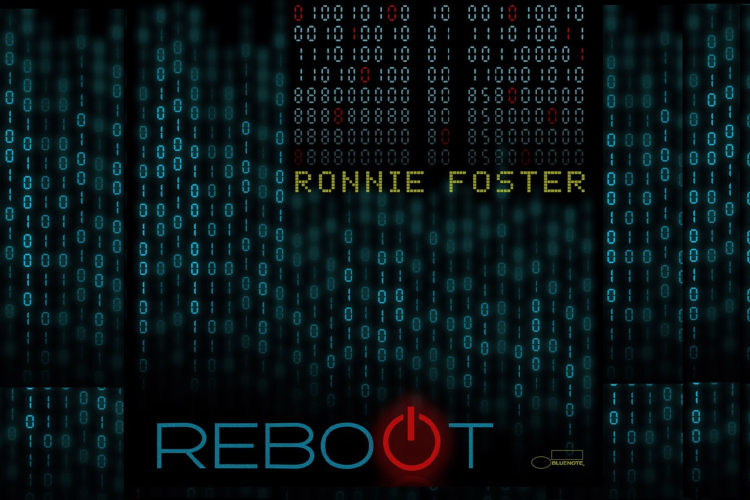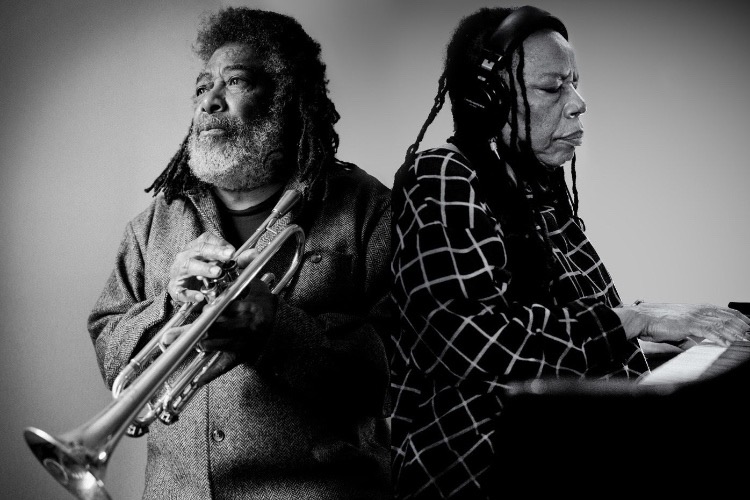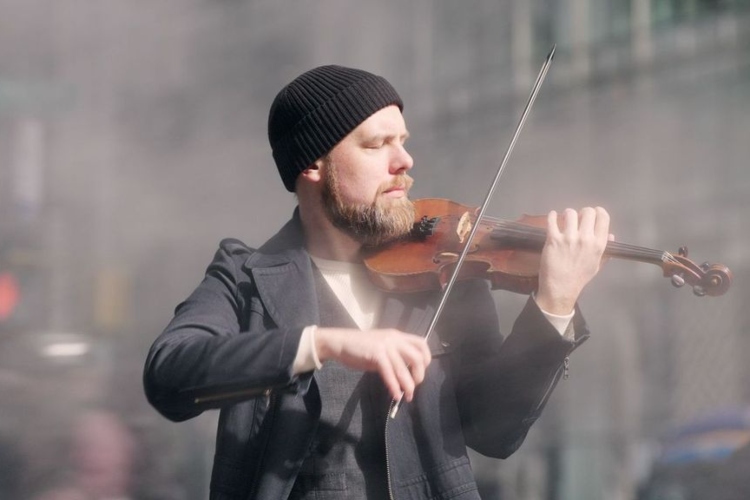Rebooting the Connection : A Conversation with Ronnie Foster (Part Two)
|
Getting your Trinity Audio player ready...
|
We continue (check out part one here) our conversation with Ronnie Foster by discussing his classic, Two Headed Freap (Blue Note, 1972). We then briefly discuss his production work, leading into Reboot (Blue Note, 2022), his first album since 1986. With a deeper dive into Reboot we also discuss a few of Foster’s friends and collaborators, including Stevie Wonder, Carlos Santana, and even Foster’s children.
PostGenre: We had left off talking about how “Chunky” led Dr. George Butler to sign you to Blue Note. Of course, “Chunky” ended up being the first song on Two Headed Freap, which turned fifty this year. If anything, it seems the album becomes even more popular as time progresses. Especially due to how frequently other artists have sampled “Mystic Brew.” Has the Two Headed Freap’s lasting power surprised you?
Ronnie Foster: Yes, it’s weird. I first found out that musicians were sampling “Mystic Brew” when one of the forefathers of acid jazz in the UK called me to ask if he could remix it. He told me he loved my music and mentioned that A Tribe Called Quest had already done something with the song. I was unaware of Tribe’s sample, so I went out and bought Midnight Marauders (Jive, 1993) and listened to the song, “Electric Relaxation.” I realized that the group had not asked for permission to sample. In those early days of hip hop, it was common for people not to ask for permission to use a sample, but I still felt violated by them not asking. I reached out to Blue Note, and they got it all handled.
But it seems things have mostly changed since then in terms of respecting the source material. I’ve been trying to get a hold of J. Cole so I can thank him for his song “Neighbors.” The song uses “Mystic Brew,” but the sample was actually of the song played backward. I would never have known about the sample if he hadn’t credited me for it. It was beautiful that he credited me for my work.
PG: You mentioned in another interview that when working with other artists, you try to listen to everything they have ever done and build the project around them.
RF: Yeah, because the other artists I’ve worked with are some of the best out there. When I am producing something by someone like Will Downing, I listen to what the artist is all about and what they seek to accomplish with their music. A better understanding of their perspective gives me a base to build on to bring the project to the next level. If I can’t do that, I am wasting their talent on the recording.
PG: Is it more difficult to produce your own music, as on Reboot, because you are not studying your own prior recordings? In other words, because you are already close to the situation.
RF: No. I am a bit critical of myself, but it is easier to produce my own recordings because I know what I am thinking and trying to accomplish. It is funny because [Blue Note President] Don [Was] told me that when I sent in music, all of my demos sounded like finished products. That is just because of how I think. I knew where I want to go with the music, so, it was much easier to try to get there. I would sometimes second guess myself or bounce ideas off of other people, but I generally knew where I was trying to go.
PG: Do you feel your work with people like Barry White, The Jacksons, Sheila E, or Roberta Flack with Donny Hathaway has shaped your projects more closely connected with “jazz”?
RF: Yes, because I love all music, as long as it’s emotionally real. That’s true whether I’m performing with people like the ones you mentioned or producing albums. As to production, it doesn’t matter if it is David Sanborn or Chayanne, who is essentially the Michael Jackson of the Latin world. All that matters is that the music itself is meaningful.
PG: You also produced Stanley Turrentine. How did that come about?
RF: It is a funny story. I was walking down Jefferson Avenue, the main street in Buffalo [New York]. Somebody walked up to me – unfortunately, I can’t remember exactly who – and told me to go home because Stanley Turrentine was trying to call me. When I got home, I saw that Stanley had left me a message on my answering machine. I called Stanley, and he asked me to fly out to Chicago to play some shows with him and that he would send me the details. He called me twice to talk about it, but never with any specific details. Then one day, I heard a knock on the door. It was Grant Green. Grant said to me, “Ronnie, you’re coming with me!” [laughing] What could I say? So, I went and performed with Stanley.
Years later, I got a call from Bruce Lundvall, then President of Blue Note Records. Bruce had heard I was producing albums and had an idea for Stanley where he would record an album entirely of Stevie [Wonder] tunes. It was great to work on that album [Wonderland: Stanley Turrentine Plays the Music of Stevie Wonder (Blue Note, 1987)] because, in a way, it allowed me to go full circle. I had worked with Stevie before…
PG: You were even on “Summer Soft” on Songs in the Key of Life (Tamla, 1976).
RF: Right, and I had worked with Stanley before as well. So, this album was like bringing the two experiences together. It was a fun project. And Stevie was even on the album. He recorded his harmonica solo at another studio, and we mixed it in later. I was very happy with that project.
PG: Speaking of Stevie, Reboot includes a version of “Isn’t She Lovely.” Actually, you have covered several of Stevie’s compositions throughout your career: “Superwoman” on Sweet Revival (Blue Note, 1972), “Golden Lady” on On the Avenue (Blue Note, 1974), and “Tuesday Heartbreak” on Cheshire Cat (Blue Note, 1975). Is there something specific about Stevie’s music that speaks to you?
RF: I like to play Stevie’s music to pay homage to him. We are close friends. We last spoke today, actually. The crazy thing is that we were born a day apart. I was born on May 12, 1950, and Stevie was born on May 13, 1950. I’ve always appreciated how respectful Stevie has been towards me as his elder. [laughing].
Stevie is also such a significant influence on me both musically and vocally. I never really wanted to sing until I had heard him. I don’t sound like him when I sing, but our timbres are very similar. My version of “Isn’t She Lovely?” on Reboot is mostly straight-ahead in a harmonic sense, though I did a few different things with it.
PG: And, speaking of your friends, “Carlos” sounds like it honors Carlos Santana.
RF: Yes, it was to honor him. Carlos and I are friends and hang backstage at each other’s shows sometimes. I think “Carlos” covers, in a broad sense, a lot of what he does musically. It’s a little funky. There is a samba bridge. It has a Spanish feel to the intro. Those sorts of things.
A huge part of what makes the song work is its intro. It was done by a close friend, Jerry Lopez, who plays this flamenco-influenced part. Jerry is a great guitarist here in [Las] Vegas. He also has an incredible band here called Santa Fe & The Fat City Horns. It is a 16-piece powerhouse band that builds off of the music of Earth Wind & Fire and Tower of Power. On “Carlos,” Jerry just killed it.
PG: You also explore Bossa Nova on “Sultry Song II” and “After Chicago.” How do you feel Brazilian music enters into your music?
RF: I love Brazilian music and am heavily influenced by it. The harmonic structure of “After Chicago” pays tribute to some of that influence. As far as “Sultry Song II,” I wrote that song decades ago. Nestor Torres recorded it on Dance of the Phoenix (Verve, 1991) over thirty years ago. I think that I’m still visiting these ideas so many years later speaks to how much they have influenced me. It also reflects my general approach with this trio; I want to put the organ into areas you would not necessarily expect to hear it.
PG: What about the blues? “Hey, Good Lookin’ Woman” is essentially a blues tune.
RF: Definitely. I was raised on the blues and jazz, so I always pay tribute to both. Also, with that tune, when we play that song live, it often becomes a call and response thing with our audience. I try to trick the audience by starting with something simple and keep upping the ante a little. It’s like bringing the audience further into the performance as if they were part of the band.
PG: Do you feel your general approach to music has changed over the years? Especially since your last album, in 1986.
RF: I think the music on Reboot is different from my prior albums. I would hope that my music matured over thirty-six years. I have certainly grown in my creative process. Especially since I didn’t abandon music during the years between the albums; I’ve just been busy producing and composing. I’m still writing music all the time. It is undeniable that I continue to develop and change. But at the same time, I’m just being me. I’m a sponge and soak up all sorts of things that I hear. Of course, those ideas will then enter into my music. But I also work hard to not let it control my creative process. At the end of the day, I still need to sound like myself.
PG: And one interesting aspect of Reboot that was not possible thirty-six years ago was your kids contributing to the album. What was it like working with them?
RF: You know, besides being re-signed, working with my kids was the most beautiful part of this album.
My son, Chris [Foster] is on drums for half of the tracks. He’s a great drummer and has come a long way. He can play almost anything. He wasn’t too versed in swing rhythms when we started but he’s learned a lot and now plays them wonderfully.
And I am so proud of my daughter, Kaylie [Foster], who did Reboot‘s album cover. I gave her some ideas of what I was seeking – I knew I wanted the power button on it, for instance- but mostly let her go with it. She did a great job. There is even a secret code on the cover.
PG: What is the secret code?
RF: I can’t tell you what it is, but we may announce it someday.
Kaylie is also one of the top social marketing people for UFC. And she is a musician she sings and writes music. One of her songs is going to be on MTV for a show. She writes music differently than I do. More of a poppish thing.
PG: Do you see a huge difference between “pop” music and “jazz”?
RF: No, not at all. No matter what genre you’re playing, you play you. You pay respect to the circumstances that made your music, but music is music, and it’s beautiful.
Reboot will be available on Blue Note Records on July 15, 2022. It can be pre-ordered on the label’s website. A special fiftieth anniversary vinyl of Two Headed Freap is also now available.
More Information on Ronnie Foster can be found on his website.




One thought on “Rebooting the Connection : A Conversation with Ronnie Foster (Part Two)”